May 24, 2025 | 00:45 GMT +7
May 24, 2025 | 00:45 GMT +7
Hotline: 0913.378.918
May 24, 2025 | 00:45 GMT +7
Hotline: 0913.378.918
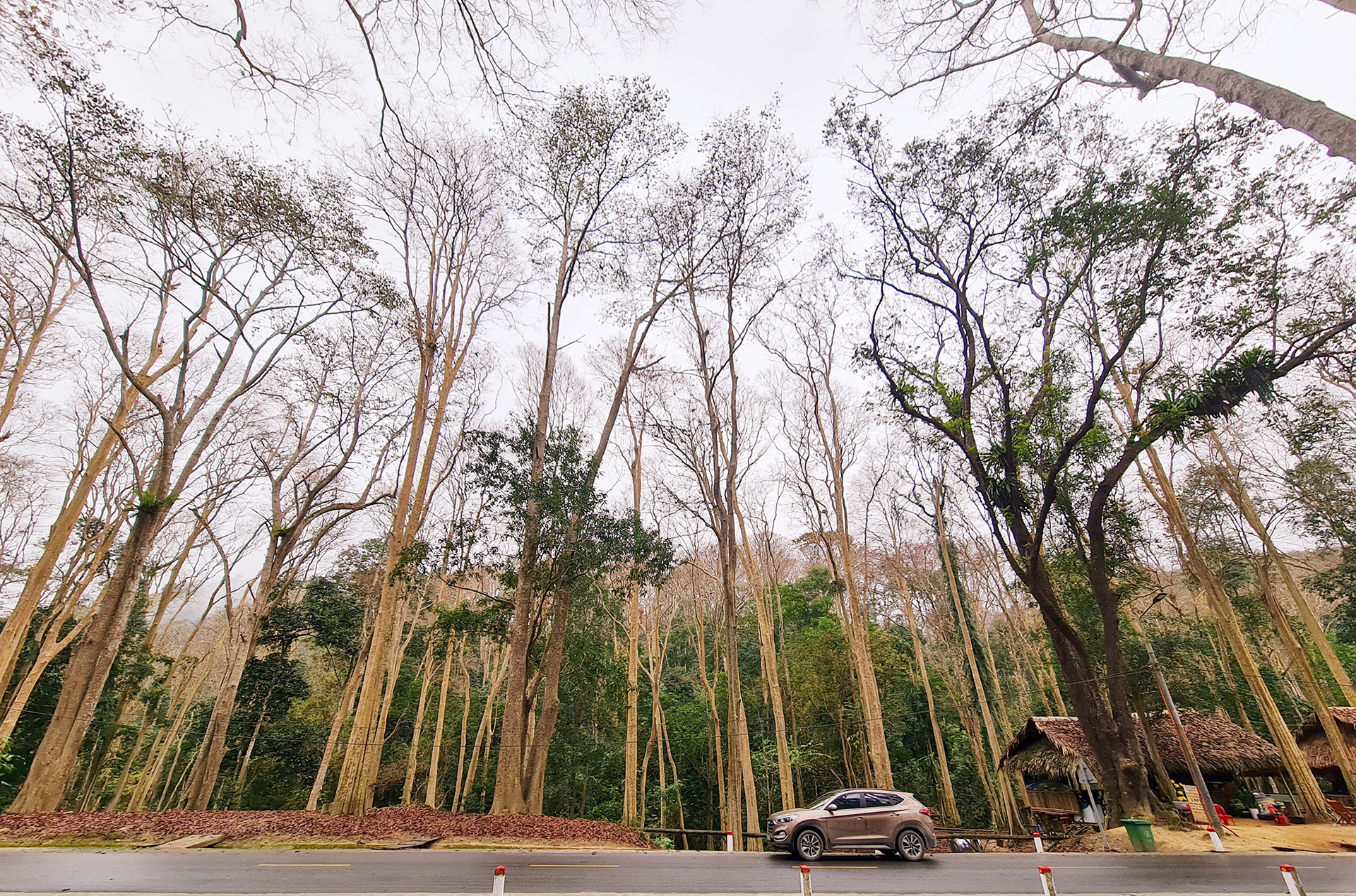
Creating sustainable livelihoods out of forest resources is an urgent task of the forestry sector. Photo: Viet Khanh.
On July 29, Minister of Agriculture and Rural Development Le Minh Hoan chairs a seminar on nature conservation and livelihood development in National Parks and Nature Reserves buffer zones in Con Cuong district, Nghe An province.
Minister Le Minh Hoan shared: “The seminar aims at its best to preserve the forests’ inherent core values, find sustainability in the forest, and change the mindset that forestry is a hard job. At the time, the Minister hopes to relieve pressures on forests rangers and keepers. He calls for participation to protect the green value for the future.
"Today, we approach the multi-value forest ecosystem based on technical, human-centric, cultural, historical, and social perspectives. We talk about the forest and listen to the forest talk back so that we can have a new perspective with an open mind.”
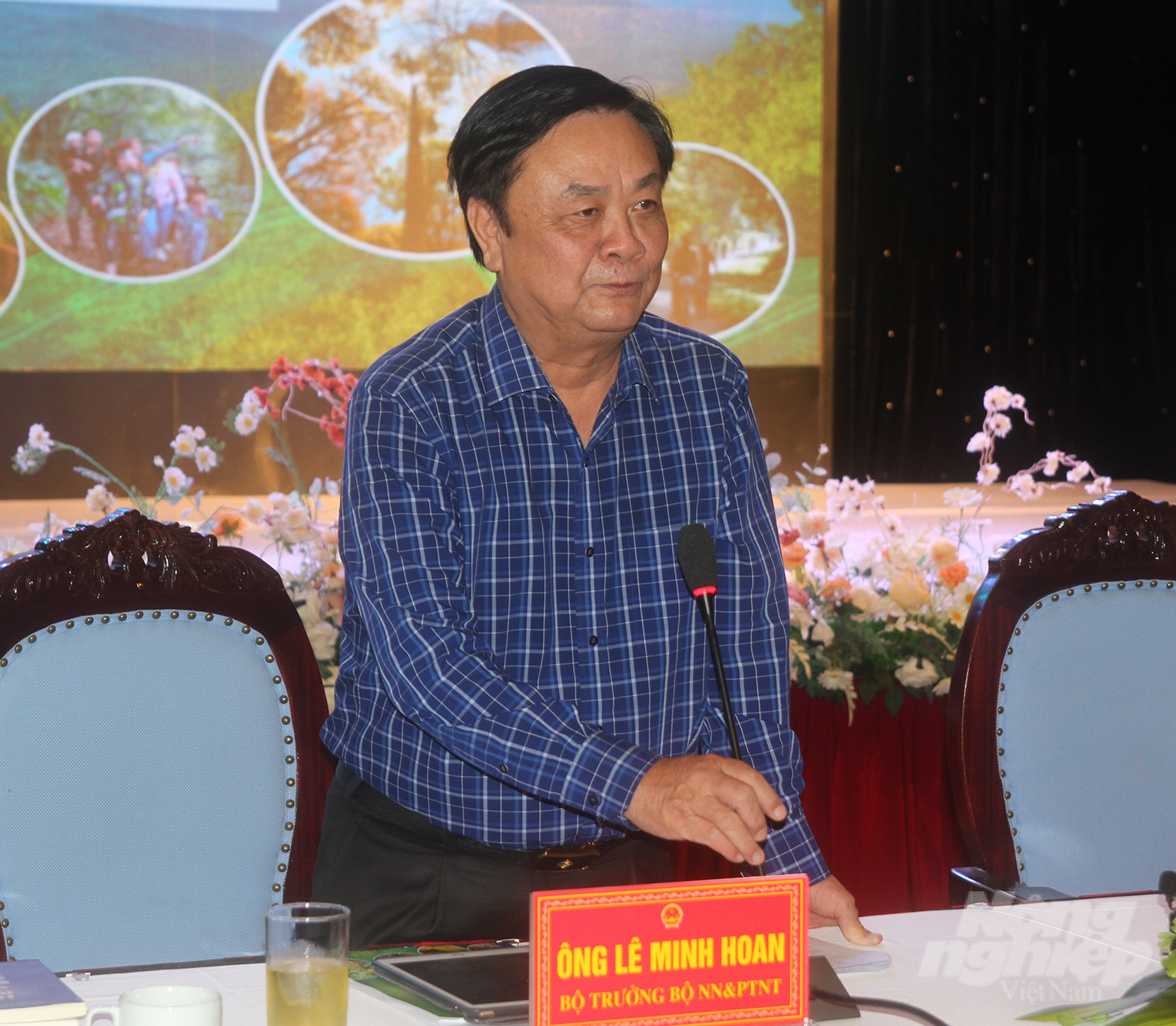
“To talk about the forest and listen to the forest talk back” is the message that MARD Minister Le Minh Hoan delivers. Photo: Viet Khanh.
Citing a proverb, Minister Le Minh Hoan asserts: “There is no path made readily, if people keep moving we will eventually figure out a path. Today we share a path, together find new values, and new actions to give thanks to the forests’ immense resources.”
Speaking on behalf of Nghe An province, Deputy Secretary of the Provincial Party Committee Nguyen Van Thong gives an overview of the local situation. Nghe An has the fourth largest population in the country, with over 3.4 million people, of which about 1.2 million people live in mountainous areas and nearly 500,000 ethnic minority people.
Nghe An has the largest forest area and forestry land in the country, with over 1.6 million hectares, accounting for 71.6% of the total natural area. They have planned 365,400 hectares of protection forests, 172,300 hectares of special-use forests, and over 622,300 hectares of production forests.
The province has about 1 million hectares of forests (of which 789,000 hectares are natural forests and 211,000 hectares are planted forests). The forest coverage in 2022 reached 58.36%, hosting about 4,569 species (3627 species of higher plants and 942 species of large and small vertebrates).
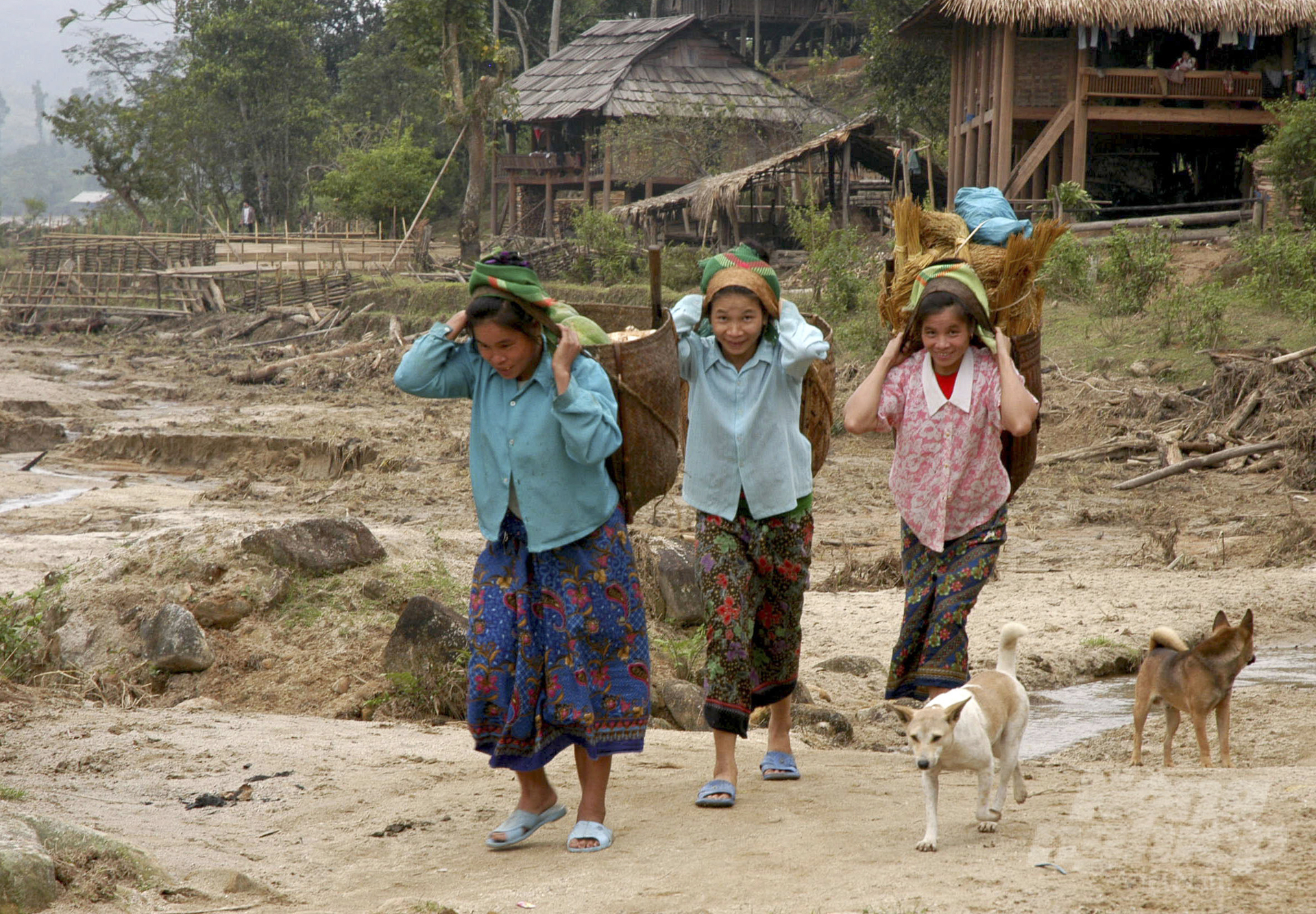
Six ethnic minority people live in the western part of Nghe An. Photo: Quoc Toan.
Especially, Nghe An owns the Western Biosphere Reserve, recognized by UNESCO in 2007. This is the largest terrestrial biosphere reserve in Vietnam and Southeast Asia, with a total area of nearly 1.3 million hectares, comprising nine districts' administrative geographical boundaries.
The value of the Western Nghe An Biosphere Reserve is immeasurable, notably the diverse culture imbued with the six ethnic groups co-living in the area ( Kinh, Thai, Tho, Kho Mu, O Du and H'Mong). It also has a green corridor connecting the three core zones: Pu Mat National Park, Pu Huong Nature Reserve and Pu Hoat Nature Reserve.
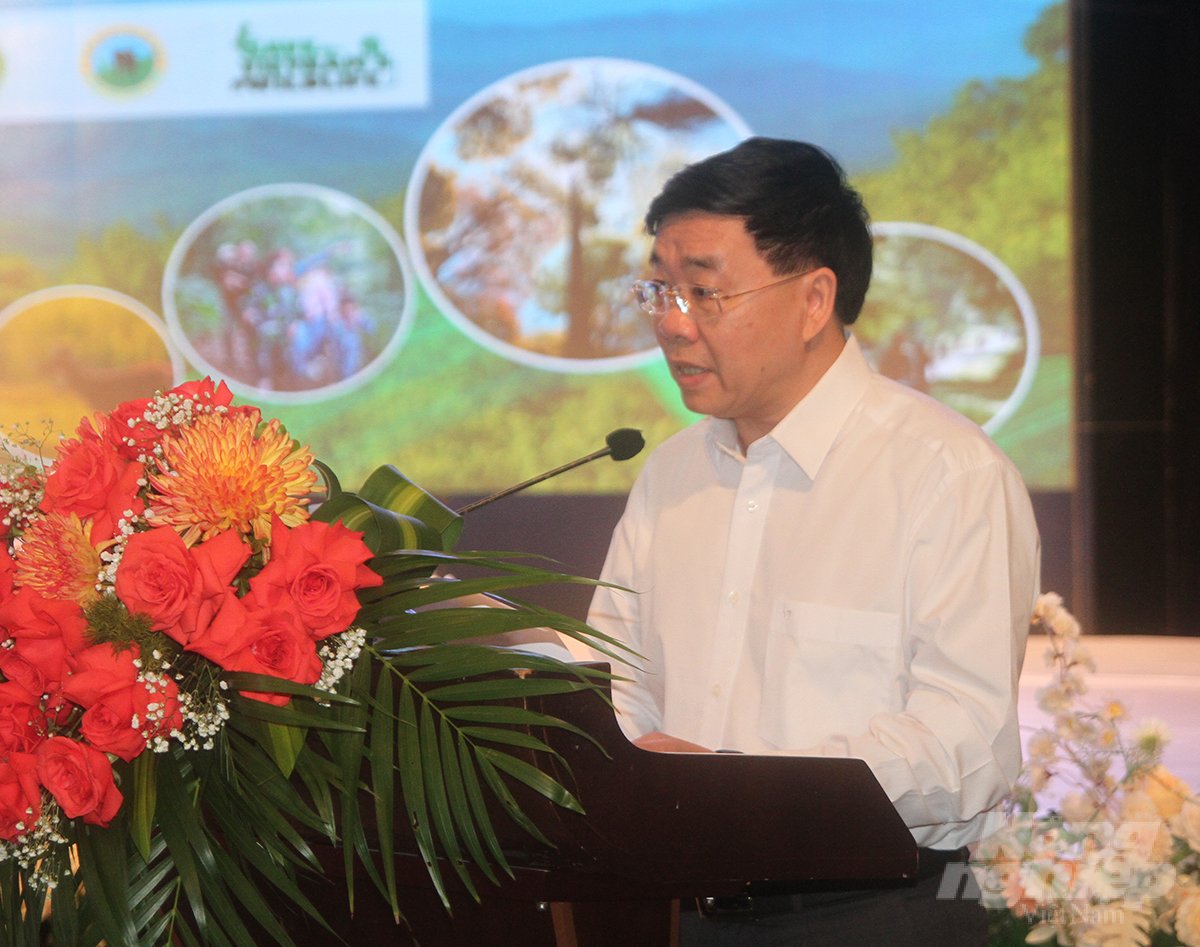
Deputy Secretary of the Nghe An Provincial Party Committee Nguyen Van Thong addresses the shortcomings and problems of the forestry industry. Photo: Quoc Toan.
“The buffer zones of national parks play a crucial role in protecting precious ecosystems, ensuring that plant and animal species have a harmonious natural habitat for development. But with the rise of social life, the value of forests is increasingly seriously threatened to the extent that natural ecosystems may lose their functions to nurture, regulate and balance the life of species, including humans.
We cannot remain indifferent. On the contrary, we must find practical and creative solutions to promote sustainable development in the buffer zones of the National Parks and Nature Reserves,” Mr. Nguyen Van Thong emphasizes.
With great value, Vietnam’s forests and the forestry industry are facing many challenges, such as lack of planning for concentrated timber plantations; low forest productivity and quality; little investigation, assessment, and production chain organization; institutional barriers; no regulations on forest carbon ownership and measurement; and insufficient forest revenue.
Striving to well-execute the assigned tasks, the solution is to construct the "Scheme on multi-value forest ecosystem development until 2030, vision to 2050" to submit to the Prime Minister. The Scheme would then be evaluated for approval, which serves as a basis for implementation.
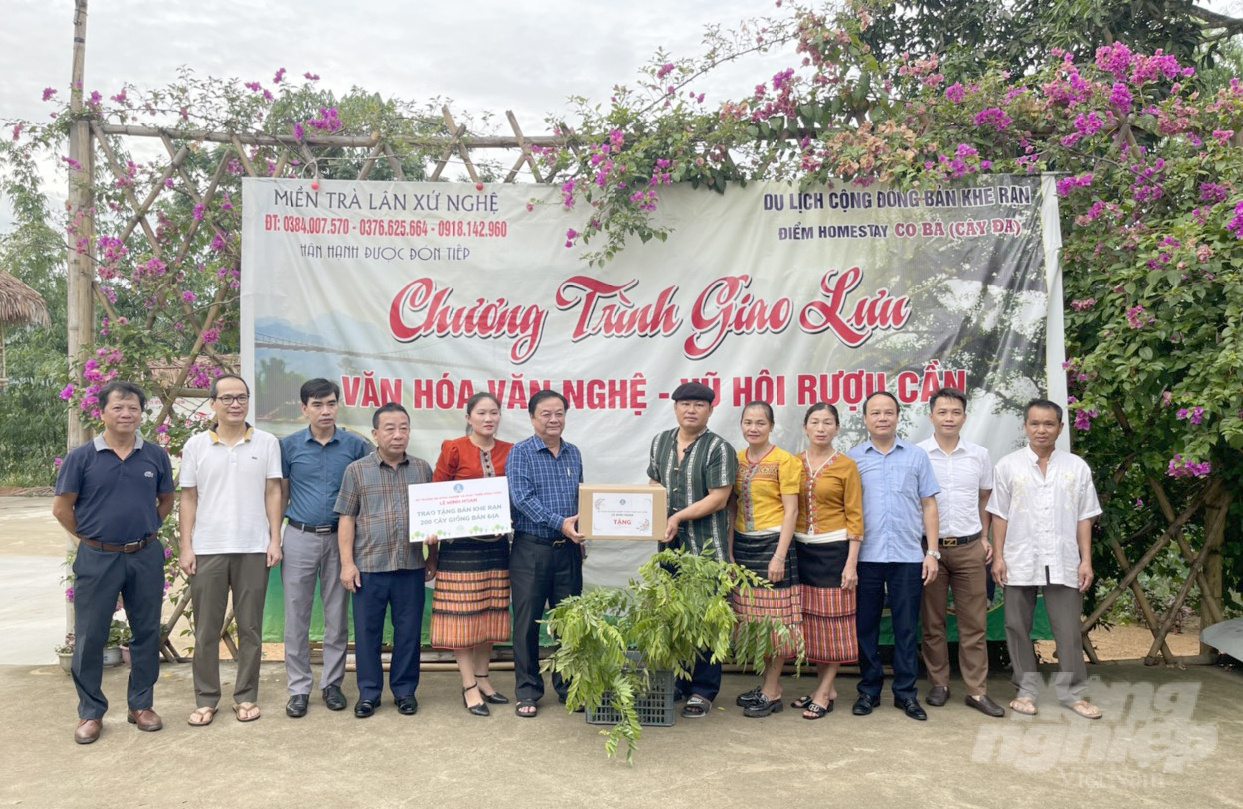
Spreading love is an important factor in empowering upland people. Photo: Quoc Toan.
Listening to the delegates, experts, and those closely attached to the forest, Minister Le Minh Hoan candidly shares some concerns.
The minister says: “100 years ago, we invented a computer the size of a room, but now a laptop can be used to watch movies, edit photos, and host meetings with people across the world. People think they are all secured, but sometimes we overprioritize material achievements and take nature for granted.”

Once the project of multi-value forest ecosystem development comes into rhythm, people in the buffer zones will no longer worry about their livelihoods. Photo: Viet Khanh.
Minister Le Minh Hoan affirms: “Preserving and developing sustainable livelihoods is a diligent and laborious journey. It requires the participation and joint efforts of all of us. It is necessary to clearly distinguish between livelihood and income since income is only limited to salary, remuneration and material benefits. In contrast, livelihood includes both quality of life, both material and spiritual values.
"Livelihood is not only work, responsibility and duty but also the joy of contributing. Forest ecosystems bring not only economic value but also social value. The trade-off of a forest area not only means trading some trees but also the livelihoods of people involved in forest protection and development.
"In pursuit of a better life, men have taken too much from nature without considering the time it takes for nature to recover. The exploitation of forests by humans has harmed nature and the ecosystem. Calculating how much economic growth has traded off environmental degradation and biodiversity deformation might be impossible. The natural green has gradually turned into brown, gray; now it’s time to turn brown, gray into green again.”
Regarding solutions and orientations in the future, MARD assigns the Forestry Department to continue closely coordinating with relevant localities and units to develop a plan for multi-value development of the forest ecosystem. Furthermore, people have to correct, adjust, supplement, and overcome the problems that limit multi-value development. This is not a purely technical project, but it should represent an innovative approach, painting a broader picture of the values of forest resources towards sustainable development.
Vietnam is recognized globally as one of 16 countries with high biodiversity. On October 30, 2014, the Prime Minister approved Decision No. 1976/QD-TTg on special-use forest systems nationwide until 2022 towards 2030. So far, the country has established 167 zones, including 34 National Parks, 56 Nature Reserves, 14 Species/Habitat Conservation Areas, 54 Landscape Protection Areas, and Scientific Research and Experimental Forests.
Besides abundant natural resources and biodiversity, Vietnam’s majestic landscape is associated with cultural, spiritual, and environmental values. Vietnam’s special-use forest system also has excellent potential to develop the values of forest ecosystem services, especially ecotourism development.
Translated by Quynh Chi

(VAN) The People's Committee of Tra Vinh province has approved an adjustment to the investment policy for the Green Hydrogen Plant project, increasing its area to approximately 52.76 hectares.
![Reducing emissions from rice fields: [2] Farmers’ commitment to the soil](https://t.ex-cdn.com/nongnghiepmoitruong.vn/608w/files/news/2025/05/05/dsc08881jpg-nongnghiep-140632.jpg)
(VAN) Clean rice cultivation model in Thuong Tan commune, Bac Tan Uyen district, is assisting local residents in achieving sustainable agriculture by substantially reducing costs, increasing productivity, and protecting the environment.

(VAN) At the conference to disseminate Resolution No. 68, AgriS introduced its digital agricultural ecosystem and reaffirmed its commitment to accompanying the Government in promoting private sector development and sustainable agriculture.

(VAN) 'Blue Ocean - Blue Foods' initiative is designed to restore marine ecosystems and establish sustainable livelihoods for local communities by cultivating a minimum of 1,000 hectares of cottonii seaweed in the first three years.
/2025/05/21/4642-3-112707_603.jpg)
(VAN) The V-SCOPE project has made direct contributions to three out of six pillars of the Comprehensive Strategic Partnership between Vietnam and Australia.

(VAN) Facing the threat of rabies spreading to the community, Gia Lai province urgently carries out measures to vaccinate dogs and cats on a large scale.

(VAN) Disease-free livestock farming not only protects livestock herds but also stabilizes production and livelihoods for many farmers in Tuyen Quang.